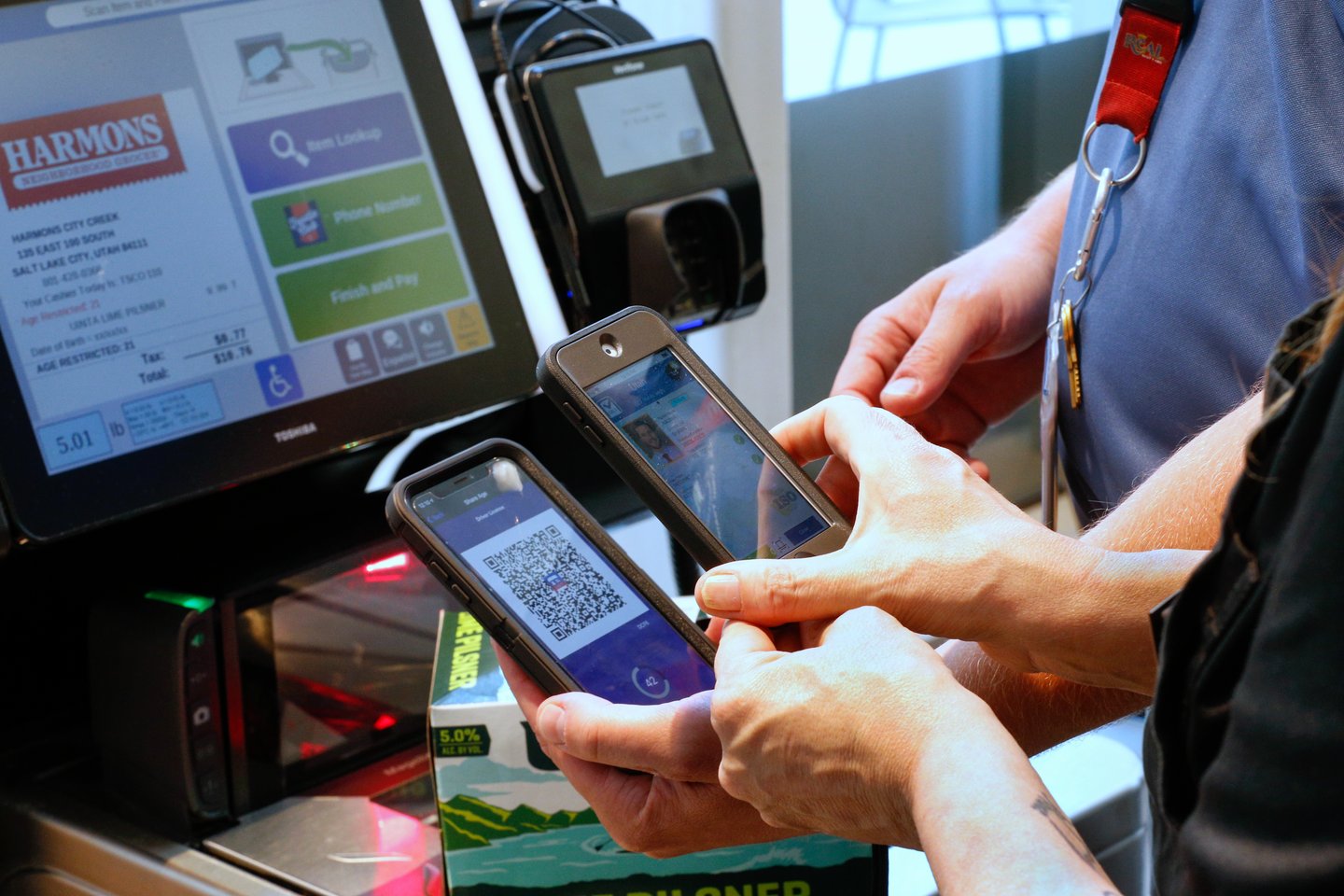What Grocers Need to Know About Mobile Driver’s Licenses
Imagine a customer in line at one of your locations, ready to buy a few bottles of wine. They pull out a smartphone and present a state-issued mobile driver’s license (mDL) for verification — in part because they (like many customers) plan to use that same device to tap to pay after their age is verified.
Unfamiliar with accepting an mDL for age verification and opting for caution, the store clerk requests a physical driver’s license instead. The transaction proceeds with the physical driver’s license, but the customer is left wondering why there’s a disconnect between their state’s promotion of its mDL and the local grocery store’s readiness to accept one.
[Read more: "Upside Expands Into Mobile Payments"]
This scenario isn’t a glimpse into a distant future — it’s already unfolding nationwide as many states move to implement mobile driver licenses. As mDL adoption accelerates, grocery store chains large and small will increasingly encounter customers hoping to use an mDL at their locations.
The Premise of mDLs in Grocery Stores
An mDL is a secure real-time-updated form of personal identification stored on a mobile device. For grocery store leaders and technologists, this represents a new, secure evolution of the physical driver’s licenses they’ve checked for decades. It’s important to note that an mDL isn’t simply a copy of the physical ID on the phone. Rather, an mDL is scanned and verified at the point of sale, using a secure standard. This addresses issues such as counterfeiting, fraud, loss and theft, which have always been potential shortcomings of physical driver’s licenses in a retail setting.
While there likely won’t be mandates to accept mDLs in the United States, consumer demand for this convenience is expected to rise. Further, as demand increases, grocery stores’ frequent age and identity verification interactions will play a key role in bridging the gap between the widespread availability of mDLs and broader acceptance at all businesses and organizations that need to check individuals’ age or identity.
Current Use and Considerations
The Transportation and Security Administration’s acceptance of mDLs at select airports serves as a point of interest for grocery stores. This use case is the first to demonstrate the feasibility and benefits of broader adoption. As implied above, however, U.S. adoption faces unique challenges due to its diverse identity infrastructure and the state-by-state rollout of mDL programs. This leaves grocers that need to verify customers’ identity or age grappling with questions about mDL acceptance.
Addressing these questions means developing a clearer understanding of the security features and standards of mDLs, which provide interoperability – e.g., an mDL that will work across state lines – and significantly reduce risk.
Enhancing Security and Privacy Simultaneously
While there’s no federal mandate, there are established mDL standards. For grocers, this means that correctly implemented mDLs offer a mechanism for reliable identity verification that mitigates fraud and underage sales — ever-present challenges in the industry. Advanced security and adherence to international standards make mDLs an option with a trajectory that runs parallel to increasingly popular tap-to-pay technology. Like tap-to-pay tech, mDLs offer both increased security and convenience by securely consolidating transactions onto the devices customers always carry: their smartphones.
Finally, the ability of an mDL to provide selective disclosure of information enhances customer privacy. This feature is particularly relevant in age-restricted sales. A clerk doesn’t need to see a customer’s exact birthday or address; they only need to know, with confidence, that a customer is old enough to purchase an age-restricted product.
Preparing for mDLs in Stores
The adoption of mDLs represents the final step in transitioning customers’ physical wallet contents to their mobile devices.
As grocers prepare for their state’s mDL, understanding the nuances of this technology will be crucial. The key lies in recognizing potential benefits — enhanced security, fraud prevention and improved customer experience — and in understanding implementation requirements and logistics.
Grocers should stay abreast of this evolving landscape, understanding the specific requirements and opportunities within their respective states, and consider the technical aspects of mDL acceptance, such as integrating mDL verifiers into their existing point-of-sale systems. Training staff to handle mDL transactions is also crucial, ensuring a smooth transition for both employees and customers.
States will be looking to grocery and other retail businesses to lead the way on acceptance — and if they start now, they’ll be well ahead of the curve.






